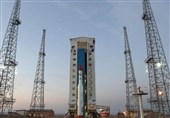Destruction of Saudi Oil Facilities Far Greater than What’s Been Announced: Yemen
TEHRAN (Tasnim) – The spokesman for Yemeni Armed Forces said the extent of damage caused on Saturday by Yemeni drone attacks on Saudi oil facilities is “far greater” than what the kingdom has acknowledged.
“The destruction of the targeted facilities is far greater than what has been announced. The Americans sought to publish fabricated pictures of the operation aftermath as part of attempts to downplay it. The blaze lasted for several hours and authorities in the state of aggression (Saudi Arabia) could not contain it,” Brigadier General Yahya Saree told a press conference in the capital Sana’a on Wednesday evening.
Saree highlighted that aerial photographs, taken by Yemeni reconnaissance drones in the wake and aftermath of the operation, show the extent of damage caused on Saudi Aramco petroleum and gas processing plants at Abqaiq and Khurais in the kingdom's Eastern Province.
He further lauded the highly disruptive drone attacks as an outstanding example of the military prowess of Yemeni army troops and allied fighters from the Popular Committees, saying that they were launched following a careful intelligence collection process.
“Our forces have reached a high level of efficiency and ability. They can manufacture various types of unmanned aerial vehicles in record time. The Second Deterrent Balance Operation, which targeted Saudi oil installations, is a perfect example of the capabilities of our forces in terms of planning and implementation,”
He added, “We assure the world that the free and steadfast Yemeni nation will not hesitate to respond to the (Saudi-led) coalition of aggression, and will use its legitimate right to target all targets deep inside the countries involved.”
Saree went on to say that various kinds of combat drones were used in the Second Deterrent Balance Operation, noting that they were launched from three different locations according to their flight endurance and designated targets.
He underlined that the third generation of domestically-designed and -manufactured Qasef (Striker) combat drones, long-endurance Sammad-3 (Invincible-3) drones – which have an operational range of 1,500 kilometers to 1,700 kilometers and newly-developed drones equipped with jet engines.
Saree also said that each of the new drones can carry four precision-guided bombs with fissionable heads every time, and can monitor and hit their targets from several angles.
“Other aircraft were also used so the main combat drones could hide in their shadow without being detected, and signal jamming devices effectively disabled the enemy’s air missile defense systems,” he said.
On Saturday, Ansarullah movement and their allies in the Yemeni army deployed as many as 10 drones to bomb Abqaiq and Khurais oil facilities run by the Saudi state-owned oil company Aramco.
The unprecedented attacks knocked out more than half of Saudi crude output, or five percent of global supply.
Yemen’s defenseless people have been under massive attacks by the coalition for more than four years but Riyadh has reached none of its objectives in Yemen so far.
Since March 2015, Saudi Arabia and some of its Arab allies have been carrying out deadly airstrikes against the Houthi Ansarullah movement in an attempt to restore power to fugitive former president Abd Rabbuh Mansour Hadi, a close ally of Riyadh.
Official UN figures say that more than 15,000 people have been killed in Yemen since the Saudi-led bombing campaign began.
The Saudi war has impacted over seven million children in Yemen who now face a serious threat of famine, according to UNICEF figures. Over 6,000 children have either been killed or sustained serious injuries since 2015, UN children’s agency said. The humanitarian situation in the country has also been exacerbated by outbreaks of cholera, polio, and measles.






